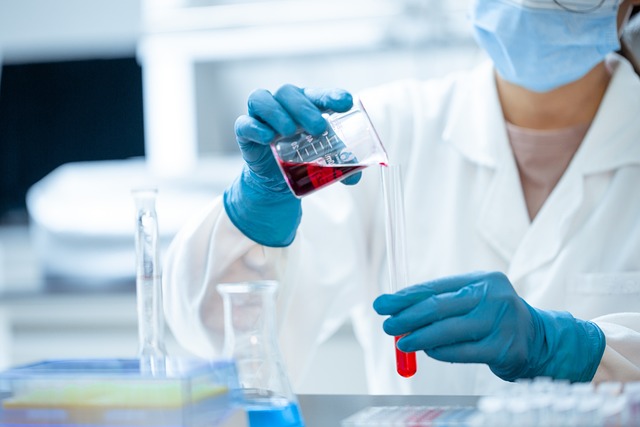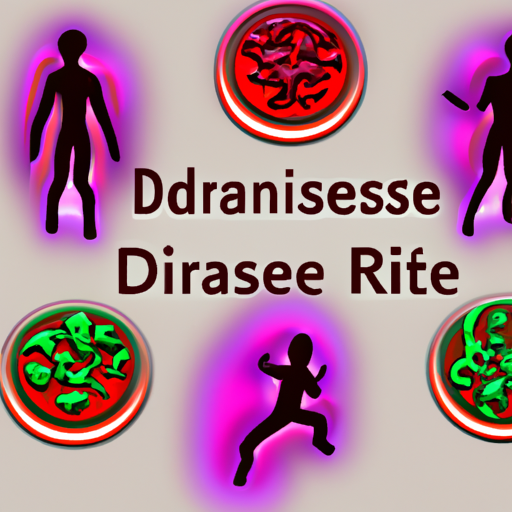
what rare diseases means
The blog post aims to explore the meaning and implications of rare diseases, those medical conditions that affect a small percentage of the population but have a profound impact on the lives of patients and their families. The post delves into the definition, challenges in diagnosis and treatment, and the psychological and economic impact of these illnesses.
What Defines a Rare Disease?
A rare disease is defined as a medical condition that affects a small number of people in a population. These diseases are often characterized by their low prevalence, with some affecting as few as one in a million individuals. Although each rare disease is unique in its symptoms and progression, they all share the commonality of being uncommon and often difficult to diagnose. Rare diseases can range from genetic disorders to autoimmune conditions, neurological disorders to rare cancers. Despite their diversity, they are united by the challenges they pose to patients, healthcare professionals, and researchers.
Rare diseases are often misunderstood and overlooked due to their low prevalence. The lack of awareness and understanding surrounding these conditions can lead to delayed diagnoses and limited treatment options. Additionally, the scarcity of research and clinical trials for rare diseases further compounds the challenges faced by patients. This can result in a lack of effective therapies and a sense of isolation for those living with these conditions.
The impact of rare diseases extends beyond the individual affected. Family members and caregivers also bear the burden of managing the physical, emotional, and financial challenges associated with these conditions. The rarity of these diseases can make it difficult for patients to find support networks and resources specific to their condition. Furthermore, the high cost of specialized treatments and medications can place a significant financial strain on families already grappling with the emotional toll of a rare disease diagnosis.

An image illustrating various types of rare diseases represented by symbols.
Diagnosing a Needle in a Haystack: The Challenges of Identifying Rare Diseases?
Diagnosing rare diseases can be likened to finding a needle in a haystack. The complexity and rarity of these conditions make them incredibly challenging to identify and diagnose. One of the primary obstacles is the lack of awareness and familiarity among healthcare professionals. Many rare diseases have symptoms that overlap with more common conditions, leading to misdiagnosis or delayed diagnosis.
Furthermore, the limited availability of diagnostic tools and tests specific to rare diseases adds to the difficulty. Unlike well-known diseases, there may not be established guidelines or standardized protocols for diagnosing these conditions. This means that healthcare providers must rely on their clinical expertise and knowledge of rare diseases to piece together the puzzle.
Another challenge is the genetic nature of many rare diseases. Genetic testing plays a crucial role in diagnosing these conditions, but it can be costly and time-consuming. Additionally, not all rare diseases have a known genetic basis, making it even more challenging to pinpoint the underlying cause.
The rarity of these diseases also poses challenges in terms of access to specialized healthcare centers and expert opinions. Many patients may have to travel long distances or wait for extended periods to consult with a rare disease specialist. This can result in prolonged uncertainty and frustration for individuals seeking a diagnosis.
כדי לקרוא עוד מידע בתחום של rare diseases company וwhat rare diseases means עליך לבקר ב- truemedtx.com
The Economic Impact: What's the Real Cost of Rare Diseases?
Rare diseases not only have a significant impact on individuals and their families but also on the economy as a whole. The financial burden associated with rare diseases can be overwhelming, affecting healthcare systems, insurance companies, and society at large. To understand the real cost of rare diseases, we need to delve into three key aspects:
healthcare expenses, research and development costs, and productivity losses.
- 1. Healthcare Expenses:
Individuals with rare diseases often require specialized and expensive medical care. The cost of diagnostic tests, treatments, medications, and ongoing monitoring can quickly add up. Moreover, the rarity of these conditions means that there may be limited treatment options available, leading to higher costs for accessing specialized care or experimental therapies. These healthcare expenses can place a significant strain on individuals and their families, leading to financial hardship and potential barriers to accessing necessary care. - 2. Research and Development Costs:
Rare diseases often lack effective treatments or cures, necessitating extensive research and development efforts. Developing new therapies for rare diseases can be a lengthy and costly process. Pharmaceutical companies and researchers face unique challenges, including small patient populations for clinical trials and the need for specialized expertise. These factors contribute to the high costs associated with developing new drugs and treatments for rare diseases. - 3. Productivity Losses:
Rare diseases can have a profound impact on an individual's ability to work and maintain employment. Many rare diseases are debilitating and require ongoing medical care, leading to frequent hospitalizations, appointments, and limited ability to perform regular job duties. This can result in reduced productivity, missed workdays, and even long-term disability. The cumulative effect of these productivity losses not only affects individuals and their families but also has broader implications for society, including reduced economic output and increased healthcare and social welfare costs.

An infographic showing the economic burden of rare diseases on healthcare systems.
"It's not just physical, it's psychological too": The Psychosocial Impact of Rare Diseases
Living with a rare disease goes beyond the physical symptoms and medical challenges. The psychosocial impact of rare diseases can be profound and often overlooked. Individuals with rare diseases may face a range of psychological and emotional struggles that can have a significant impact on their overall well-being.
Firstly, the journey to diagnosis can be a long and frustrating one. Many rare diseases have nonspecific symptoms that can mimic other conditions, leading to misdiagnosis or a delayed diagnosis. This uncertainty and the often protracted search for answers can cause anxiety, stress, and feelings of isolation.
Secondly, the rarity of these diseases means that individuals may struggle to find a community or support network of people who understand their experiences. The feeling of being alone or misunderstood can lead to feelings of loneliness, depression, and social isolation. Connecting with others who share similar challenges can provide vital emotional support and a sense of belonging.
Additionally, the impact of rare diseases extends beyond the individual affected to their families and caregivers. The emotional toll on family members can be significant, as they navigate the complexities of managing the disease, supporting their loved one, and dealing with their own fears and concerns. This can strain relationships and create additional stress within the family unit.
Furthermore, the daily management of a rare disease can be physically demanding and emotionally draining. Individuals may require frequent medical interventions, medication regimens, and lifestyle adjustments. These challenges can lead to feelings of frustration, grief, and a sense of loss of control over one's life.
Finally, the psychosocial impact of rare diseases can also affect educational and career opportunities. Individuals may face obstacles in pursuing education or maintaining employment due to the unpredictable nature of their condition or the need for frequent medical interventions. This can lead to feelings of frustration, low self-esteem, and financial strain.
While rare diseases may affect a smaller portion of the population, their impact is far-reaching and significant. Greater understanding, research, and funding are required to improve diagnosis, treatment, and support for patients and their families. The fight against rare diseases is not just a medical concern, but a societal one that requires our collective attention and action.